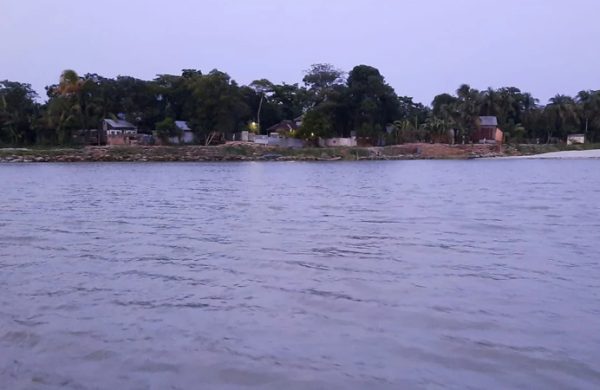Govt chooses concrete instead of bitumen for more durable, cheaper highways
- Update Time : Friday, September 12, 2025

TDS Desk:
The government is moving towards building more concrete highways instead of bitumen-based roads, after trials show rigid pavements last longer, cost less to maintain, and better withstand Bangladesh’s climate and traffic conditions.
According to the Roads and Highways Department (RHD), bitumen and Polymer Modified Bitumen (PMB) pavements are cheaper to build but have a short lifespan. Also, they require at least four major overhauls within two decades in addition to routine repairs. They are also vulnerable to heat, cold, waterlogging, and damage from overloaded trucks.
Concrete pavements, by contrast, use locally sourced cement, sand, and stone. Though construction costs are about 10-15% higher, they last 20-30 years with minimal upkeep and perform better under extreme weather and flooding. Engineers say the shift could significantly cut annual maintenance costs and make highways more sustainable – a strategy already embraced in India and several other countries.
POLICY PUSH AND ONGOING PROJECTS
The move is no longer theoretical. On the 190km Elenga-Hatikamrul-Rangpur highway expansion, about 90 kilometres have been built with concrete, while 100 kilometres remain bituminous. Similarly, in the Dhaka-Sylhet corridor development project, an 11km stretch is being paved with concrete on a trial basis – a decision expected to save around Tk54 crore.
An RHD official told that the Chief Adviser’s Office has instructed the department to scale up the use of rigid pavements nationwide.
Engineers also point out that while sections of the Dhaka-Chattogram highway built with bitumen deteriorated under heavy traffic and waterlogging, concrete stretches at markets and toll plazas have held firm.
EXPERT OPINION AND GLOBAL LESSONS
Prof Shamsul Haque of Bangladesh University of Engineering and Technology (Buet), a leading transport expert, urged the government to adopt a national policy prioritising concrete for regional highways and expressways. He cited India’s 2017 decision to make all new national highways concrete after research confirmed its long-term benefits.
“Concrete roads reduce maintenance costs, save public money, and minimise the disruptions caused by frequent repairs. For Bangladesh, this is not only an engineering choice but also an economic and strategic one,” Prof Haque said.
ADVANTAGES OF CONCRETE ROADS
Two major materials dominate road construction: bitumen (flexible pavements) and concrete (rigid pavements). Bitumen, a byproduct of imported fuel, creates heavy reliance on foreign supply and adds pressure on the dollar.
While bituminous roads are cheaper to build initially, their lifespan is shorter. Within 20 years, they require at least four major maintenance overhauls in addition to routine repairs. High heat (above 35-40°C) can cause melting, cold weather triggers cracks, and waterlogging or heavy rainfall quickly damages the surface.
Concrete, in contrast, uses locally produced cement, sand, and stone. Though construction costs are slightly higher, it lasts 20-30 years with minimal maintenance, making it more economical over the lifecycle.
Concrete highways also better withstand extreme temperatures, floods, and waterlogging. Their reflective surface improves night visibility, and rigidity prevents wheel depressions, cutting heavy truck fuel consumption by about 20%.
Studies also show concrete is environmentally friendlier, absorbing less heat due to its lighter colour, helping reduce the urban “heat island effect”.
CONCRETE ROADS: NOISY, BUMPY BUT DURABLE, COST-EFFECTIVE
One of the main criticisms of concrete roads has been that they cause bumps, noise, and faster tyre wear, while joints are considered weak points. However, experts say these issues arise mostly from poor workmanship and non-engineering practices.
Md Waliur Rahaman, project director of the Elenga-Hatikamrul-Rangpur 4-lane highway, said the 90km concrete stretch of his project has required no maintenance in the past four years, and routine repairs may only be needed after 10 years.
In contrast, the 100km bituminous section has already needed repairs due to rising temperatures, heavy rainfall, and overloaded six-wheel trucks, which damage flexible pavements, he said.
Similarly, in the SASEC Dhaka-Sylhet Corridor, contractors and consultants proposed building 11km of road with concrete at a slightly lower cost than bitumen. This “value engineering” approach – maintaining quality while reducing costs – is expected to save Tk54 crore.
The Chinese firm Sinohydro Engineering Bureau 8 Co Ltd is handling this section, with construction costs reduced from Tk374.62 crore to Tk320.76 crore. Concrete also allows work to continue in light rain, shortening project time, though roads can only open 28 days after curing.
RHD officials said Sylhet’s heavy rainfall, waterlogging, and frequent stone-laden overloaded trucks make bituminous pavements costly and unsustainable.
ADVANTAGES OF CONCRETE PAVEMENT
Based on extensive RHD data, concrete pavements have consistently proven more durable and resilient than bituminous roads. Along key corridors such as N1 (Dhaka-Chattogram), N3 (Dhaka-Mymensingh), and N5 (Dhaka-Rangpur), concrete sections have required virtually no maintenance for years, even under severe conditions like heavy overloading and poor drainage.
In contrast, bituminous roads – even polymer-modified versions – frequently fail and demand costly, disruptive repairs. Concrete has been especially successful in high-stress areas like toll plazas and market zones, where waterlogging quickly deteriorates conventional surfaces.
GLOBAL SHIFT TO CONCRETE HIGHWAYS: LESSONS FROM US, INDIA
The trial use of concrete pavements began in the United States in 1973, when an oil embargo by Arab nations led to a shortage of petroleum and its byproduct, bitumen. Despite higher initial costs, the US started building highways with concrete.
Early challenges – such as faster tire wear and excess dust – were addressed through extensive research by federal and state agencies, which improved surface quality.
Studies also found that trucks used about 20% less fuel on concrete roads because rigid pavements do not compress under heavy wheels, unlike bituminous (flexible) pavements.
Over time, truck owners demanded more concrete highways, prompting widespread adoption in the US and later in countries like Germany and across Europe.
Following similar research-driven insights, India in 2017 decided that no new national highways would be built with bitumen.
As a tropical country with heavy rainfall, frequent waterlogging, and poor drainage, bituminous roads proved short-lived and prone to recurring damage.
Studies confirmed that concrete pavements are more durable and cost-effective. Consequently, India set a target to construct and upgrade 30km of highways per day (about 11,000km annually), with all new stretches built using cement concrete instead of bitumen.
BUET BUILT BANGLADESH’S FIRST CONCRETE ROADS
In 1996, Buet constructed nearly 90% of its internal roads with concrete, leaving out only a few pockets.
Previously, the campus roads required frequent repairs, and bitumen drums had to be heated with straw, producing black smoke – an environmentally unfriendly process. Since switching to concrete, the roads have become virtually maintenance-free.
Prof Shamsul Haque of Buet said concrete pavements are far more effective than bitumen in withstanding overloading, waterlogging, and high temperatures. Given Bangladesh’s unique traffic and environmental challenges, concrete pavements are the most suitable solution.















